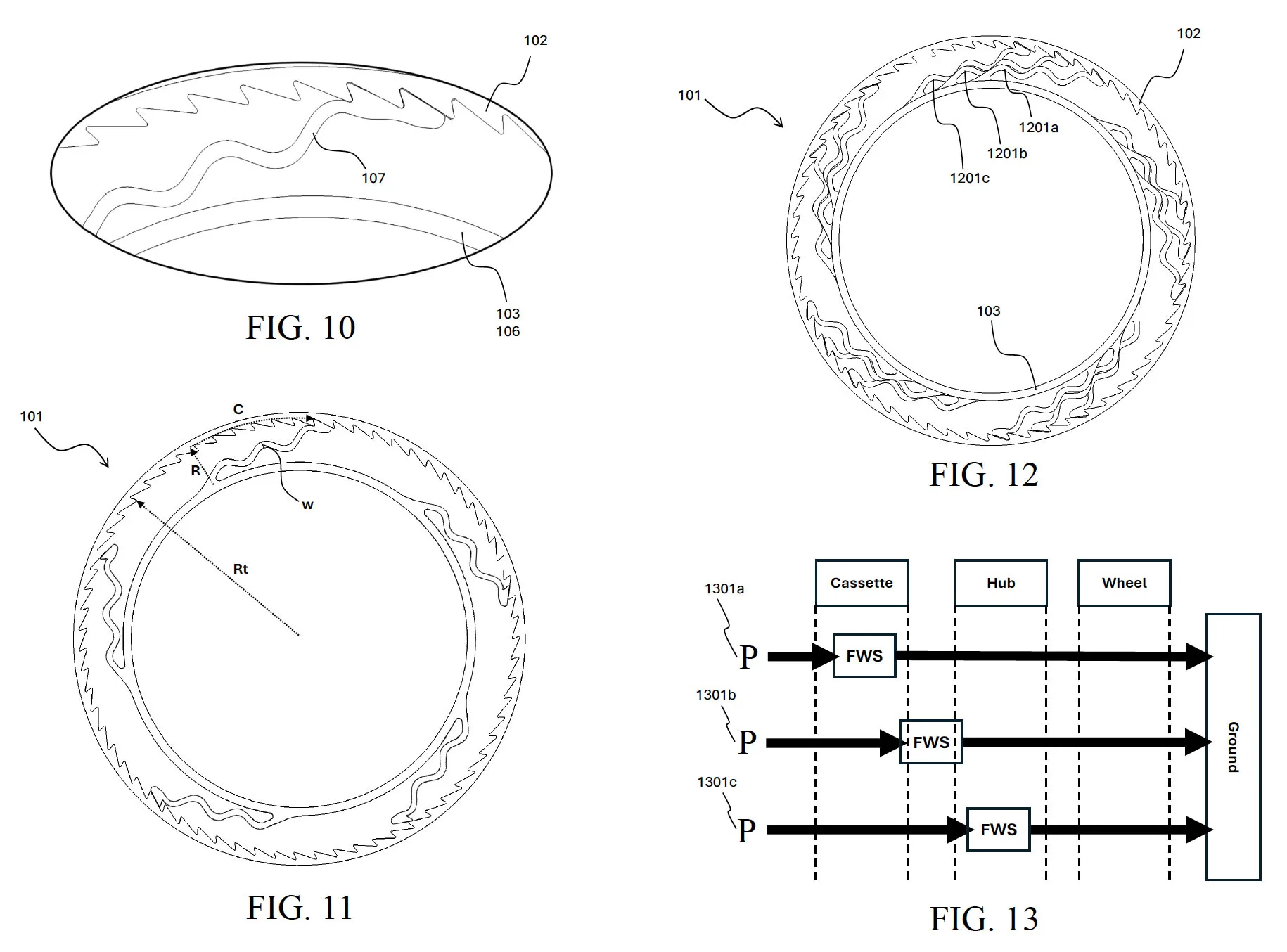OK, so, technically this new Lauf Cycles rear hub design may have “hundreds” of factors of engagement per rotation, however that may as nicely be infinite. Also called instantaneous.
Both manner, the impact is that the hub will have interaction so shortly that it’s going to really feel quick, and it does this with a really intelligent staggered, probably “elastic” pawl design that additionally softens engagement and might be positioned all through the hub’s whole shell.
Oh, and it does all of this with out magnets or springs.
How Lauf’s hub design works
The fundamental premise makes use of built-in pawls (701) made on an interior ring, every primarily it’s personal spring with a toothed hook on the finish to have interaction with the enamel (105) on the drive ring (102).
Nonetheless, it may additionally place the pawls on the outer ring and put the drive ring on the interior floor:


The pawls are staggered to have interaction at completely different factors within the hubs rotation, successfully creating extra factors of engagement with fewer-but-larger enamel. That is what number of present hubs work, normally having two or three pawls engaged at any time limit. For hubs that don’t want ultra-quick engagement, the pawls could possibly be wider (Fig. 5b).


For faster engagement, a second set of pawls could possibly be offset from the primary set (blue & orange picture on proper). Or…


…they might even use three units for even sooner engagement (Fig.12). Alternatively, they might use two or three rings in sync to extend energy as a result of, admittedly, these pawls must be fairly skinny to suit into a standard hub design. Assuming that’s what Lauf has in thoughts, let’s keep on that monitor for a second.
Stretchy, Wavy Pawls


One other tactic for bettering complete engagement and energy is to make use of a wavy form, permitting every pawl to “stretch” barely, simply sufficient such that one set engages first, then they stretch till the second set engages, then these stretch till a 3rd set engages.
The profit to that is that you’ve extra engagement all the best way across the hub, decreasing lateral stresses between the cassette and freehub and hub shell.


And, assuming you apply an excessive amount of torque, that wavy design permits the pawl to breakaway earlier than it snaps. No, that may not be nice for you, however it will theoretically protect your hub. Nonetheless, check out Fig. 13 above for a second, after which scroll down…
1000’s of Pawls, Full-Width Freehub Our bodies


What should you stuffed the whole hub shell with rows of pawls, offering a large quantity of contact space, every barely staggered but additionally in a position to stretch to permit different rows of pawls to additionally have interaction?
Not solely would this create insanely quick engagement, however it will present insanely strong engagement, too. Lauf says this additionally offers a a lot larger tolerance for pawls and ratchets being out of sync, which they are saying typically are as a result of real-world manufacturing limitations.
And, as a result of it permits for a full-width freehub physique that’s primarily a second axle, it will make the whole meeting much more sturdy, too. Figures 15-20 present quite a lot of design choices the place a number of rows of pawls slot in varied locations and permit for a greater variety of freehub-to-hub shell interfaces.
Lauf additionally says the “stretch” of every pawl permits your energy to return on progressively (nonetheless in a short time, thoughts you), which eliminates that loud KLUNK, notably on hubs with decrease engagement speeds. This will likely truly scale back put on and tear in your drivetrain, too.
Whereas Lauf is understood for his or her bikes and forks, they’re at all times tinkering. Their probably aim is to license this design fairly than develop into a hub model, too, however we’ve been shocked by them earlier than, so who is aware of?
LaufCycles.com




















